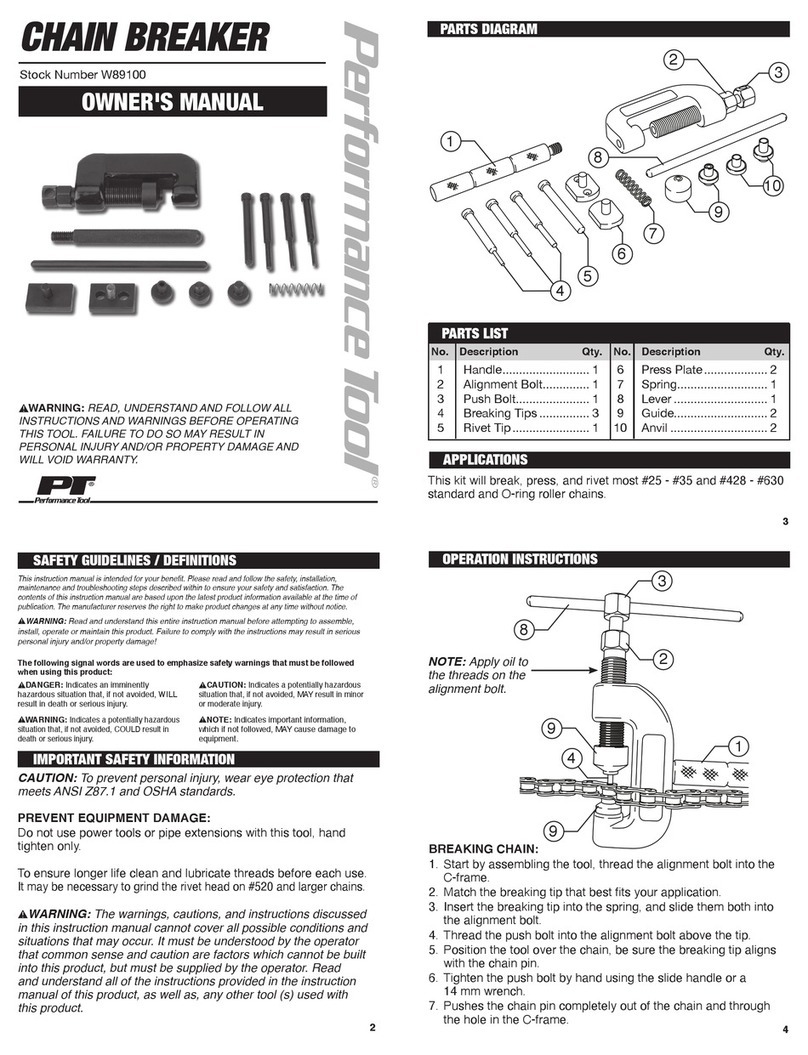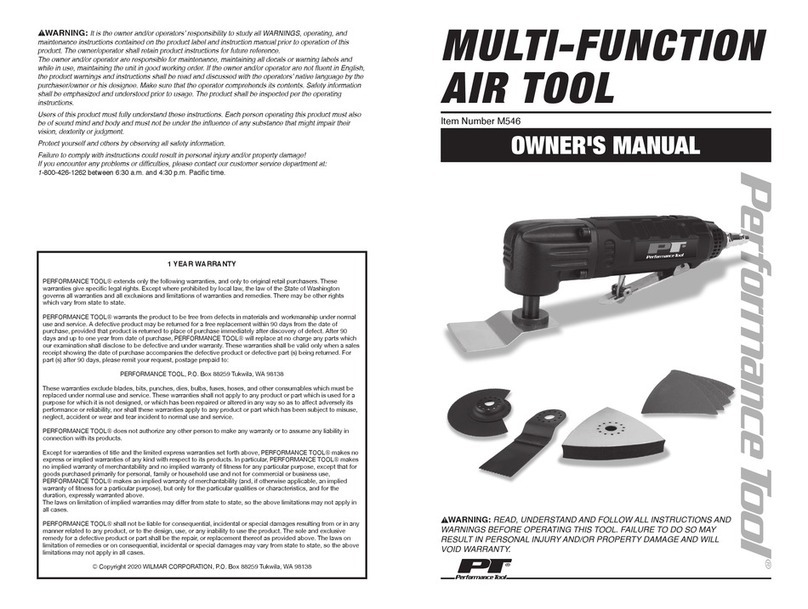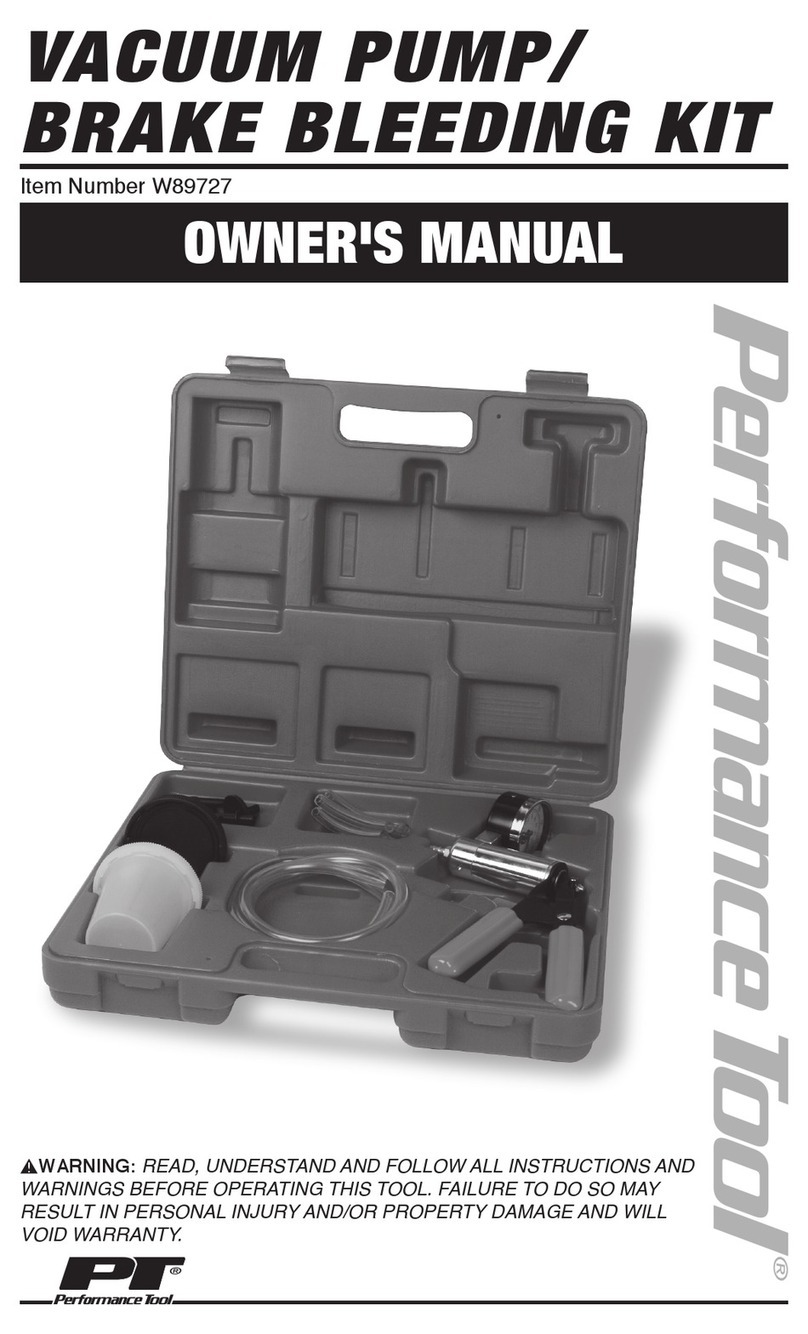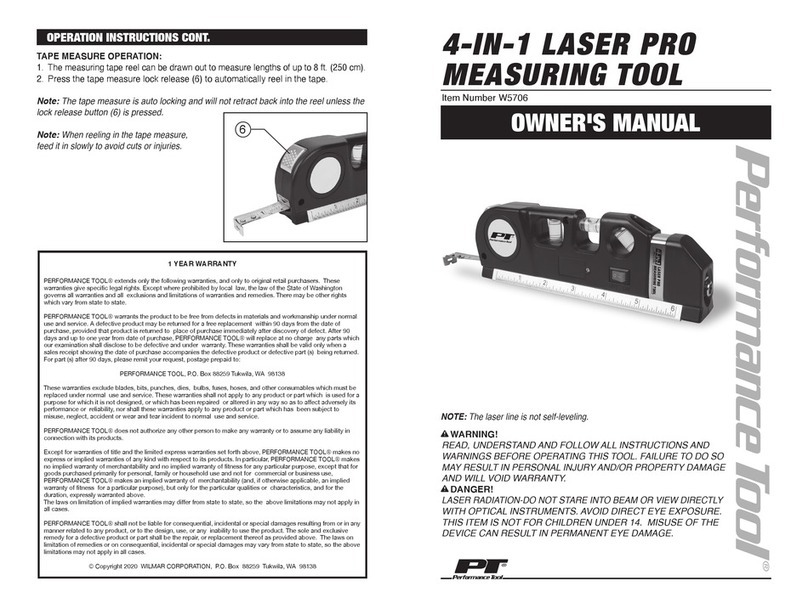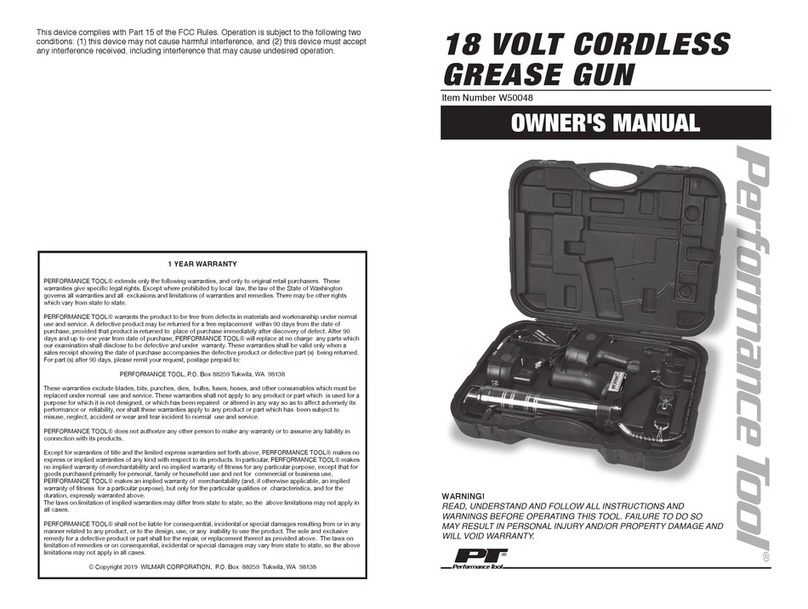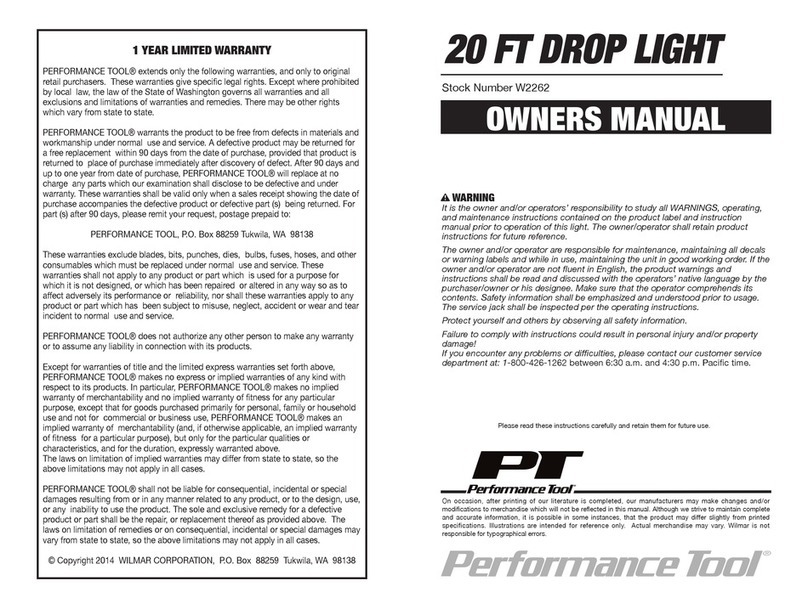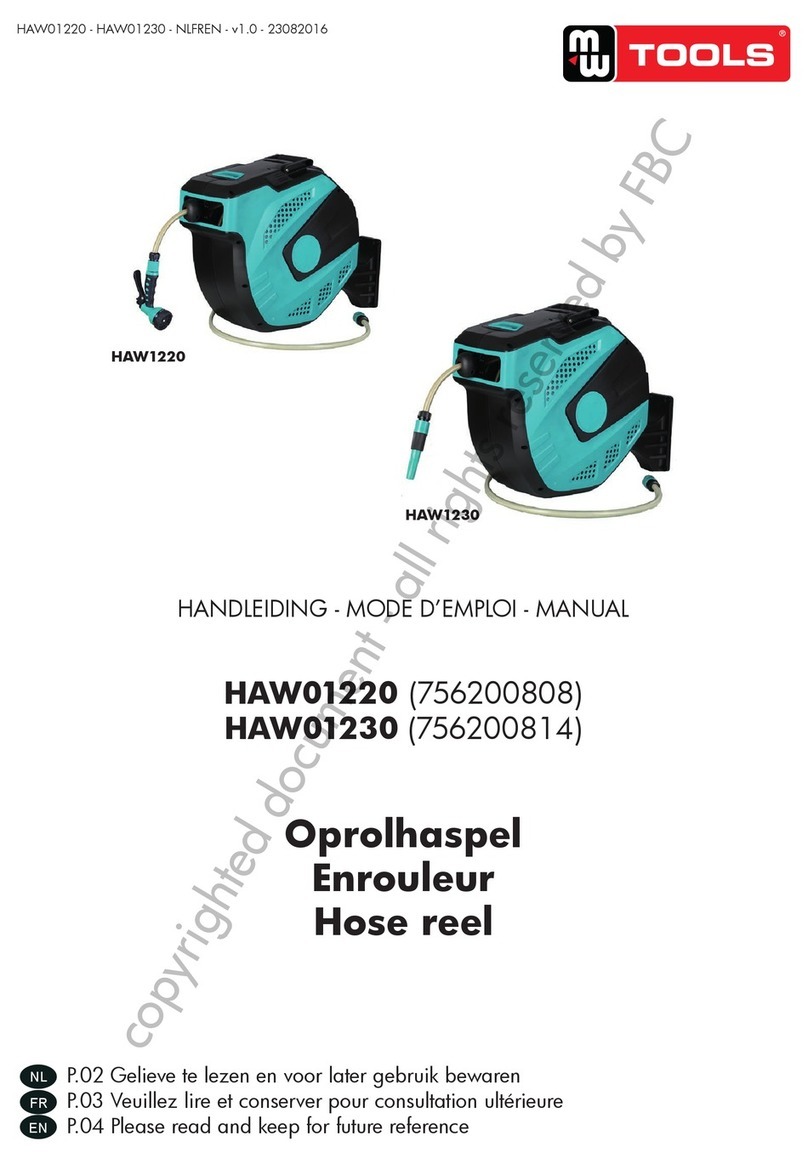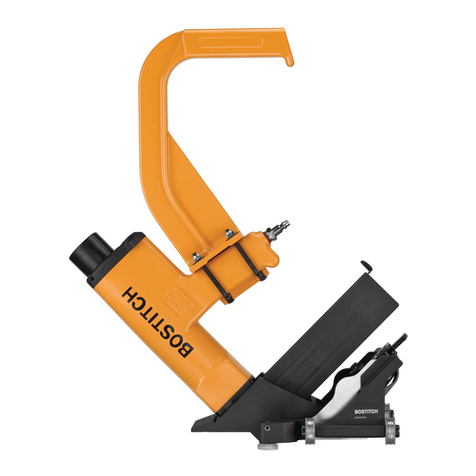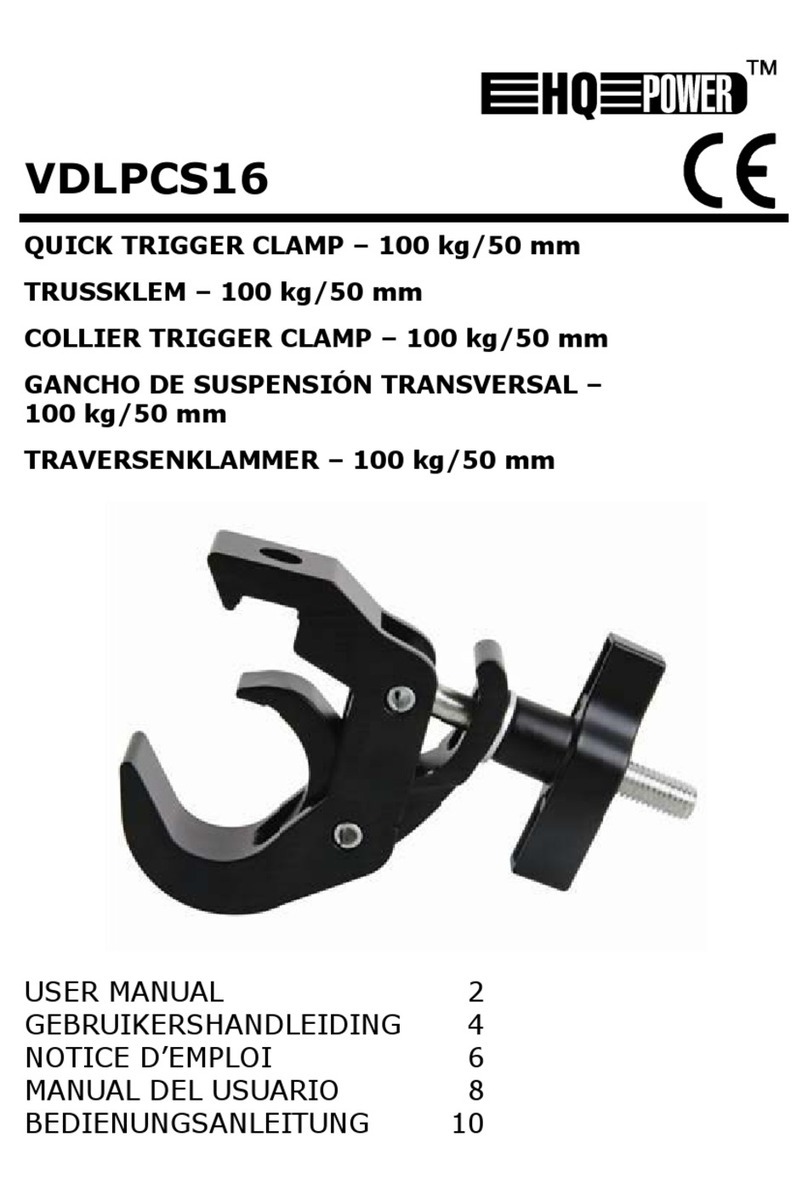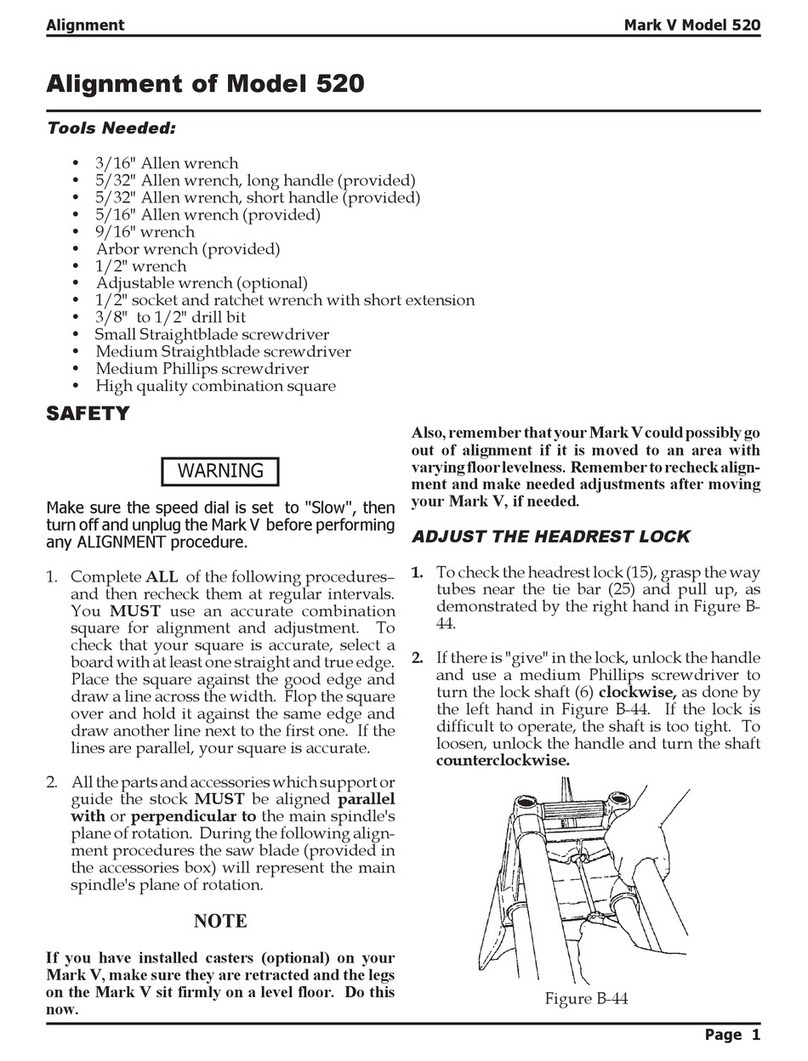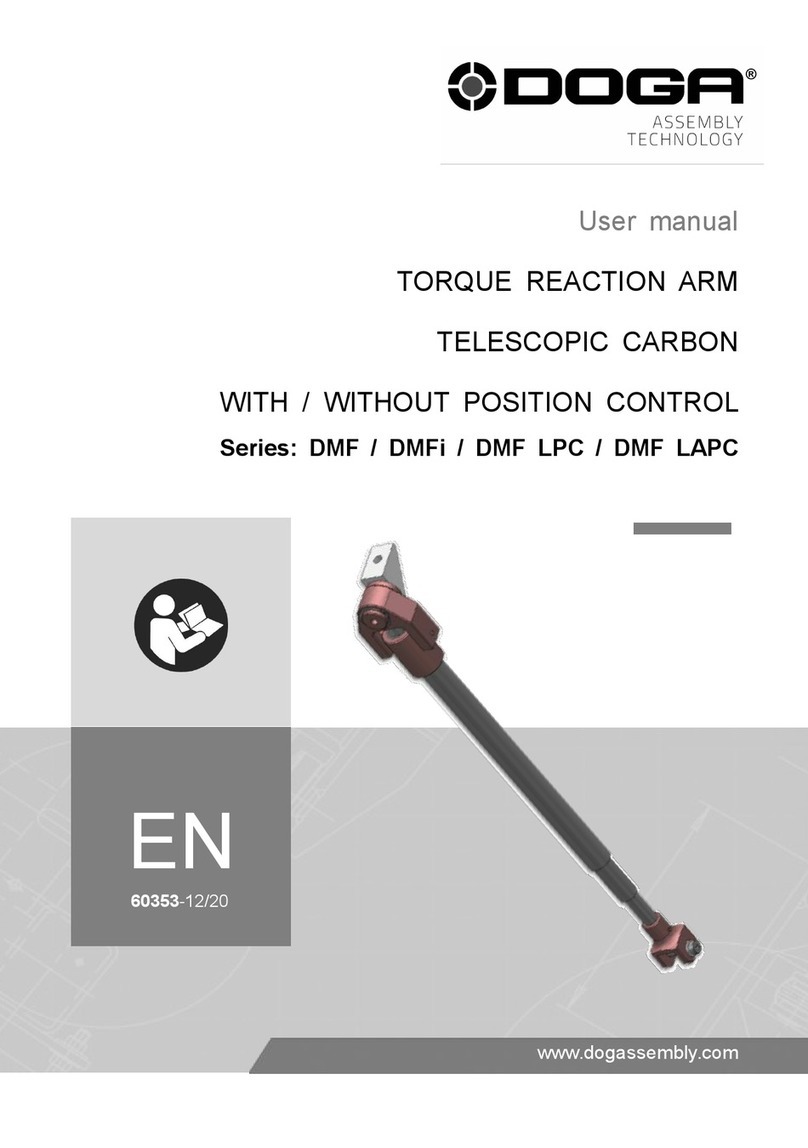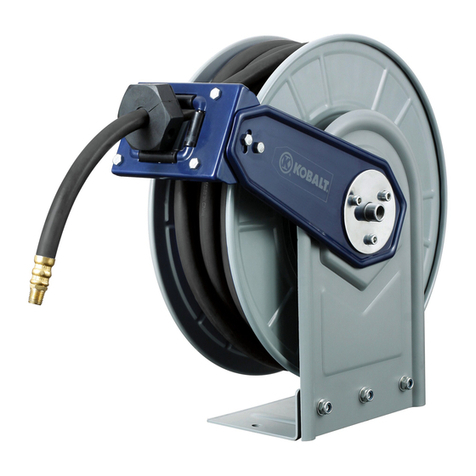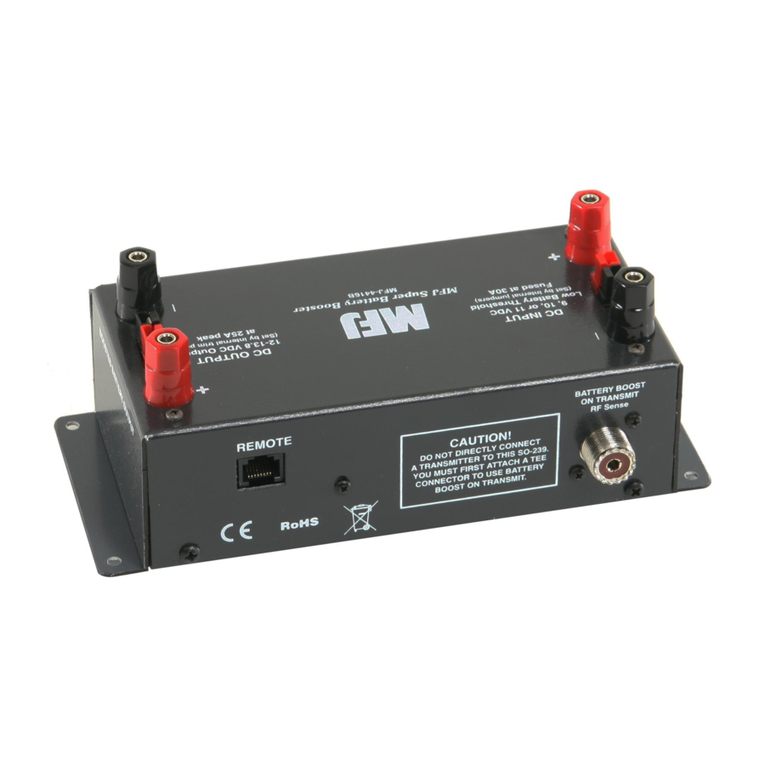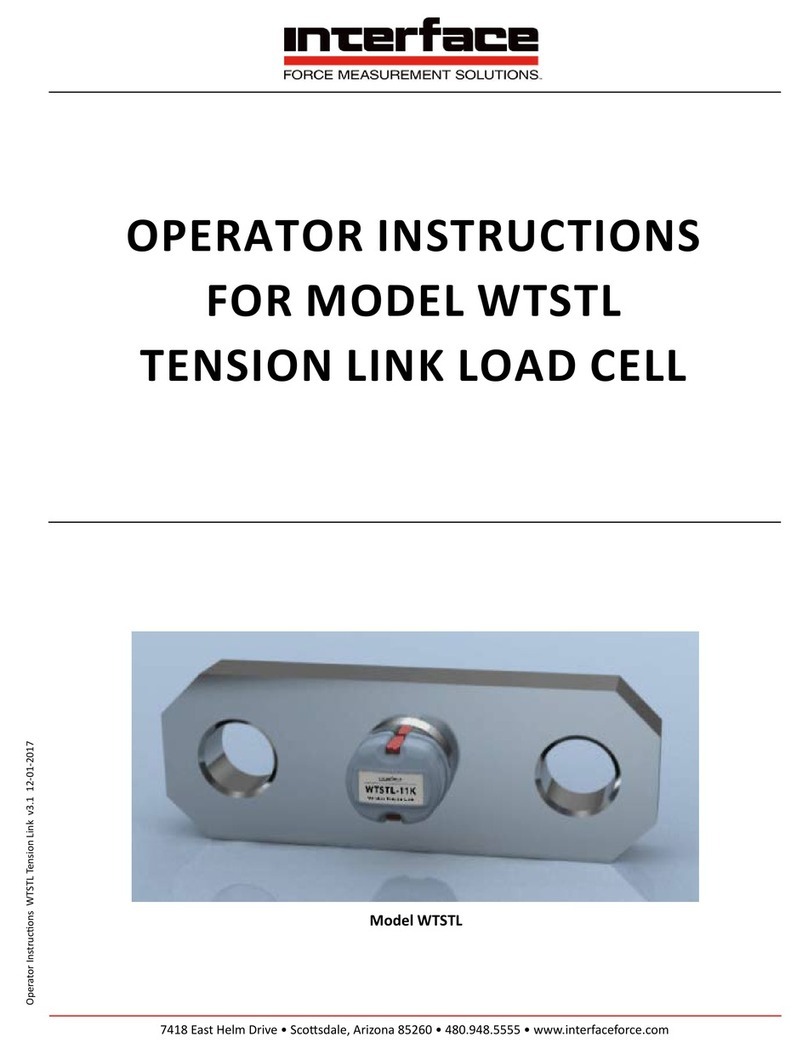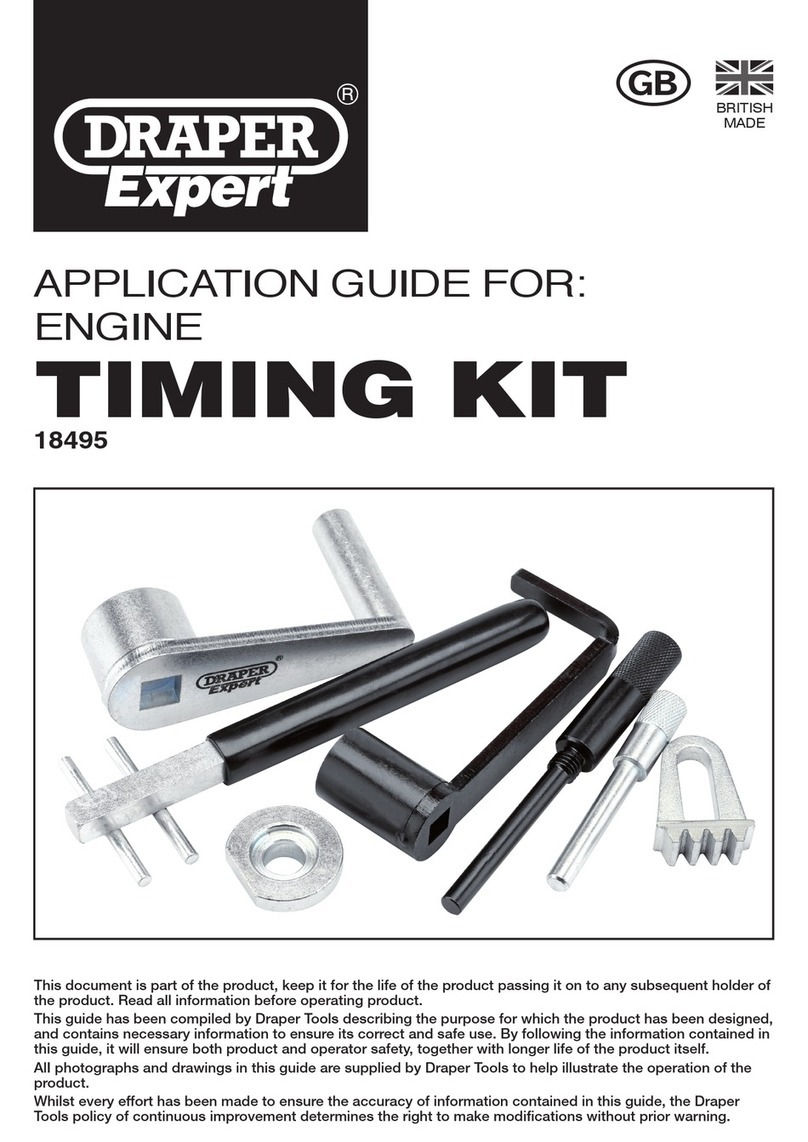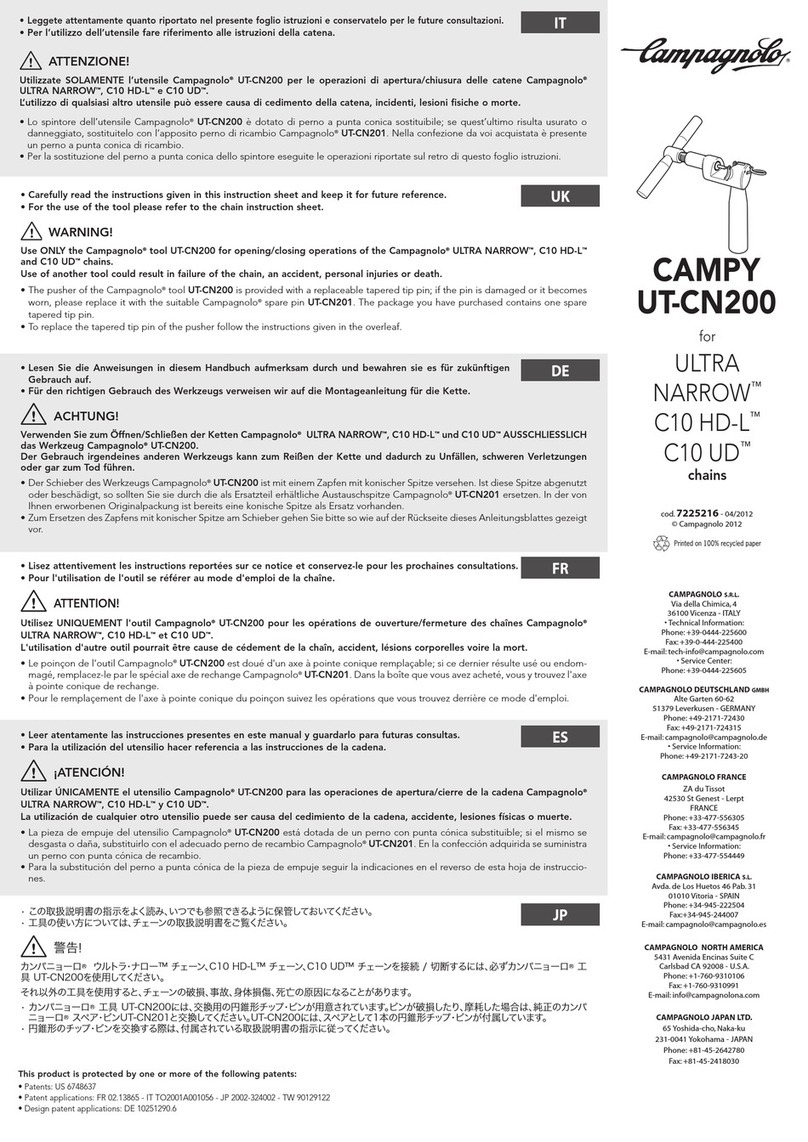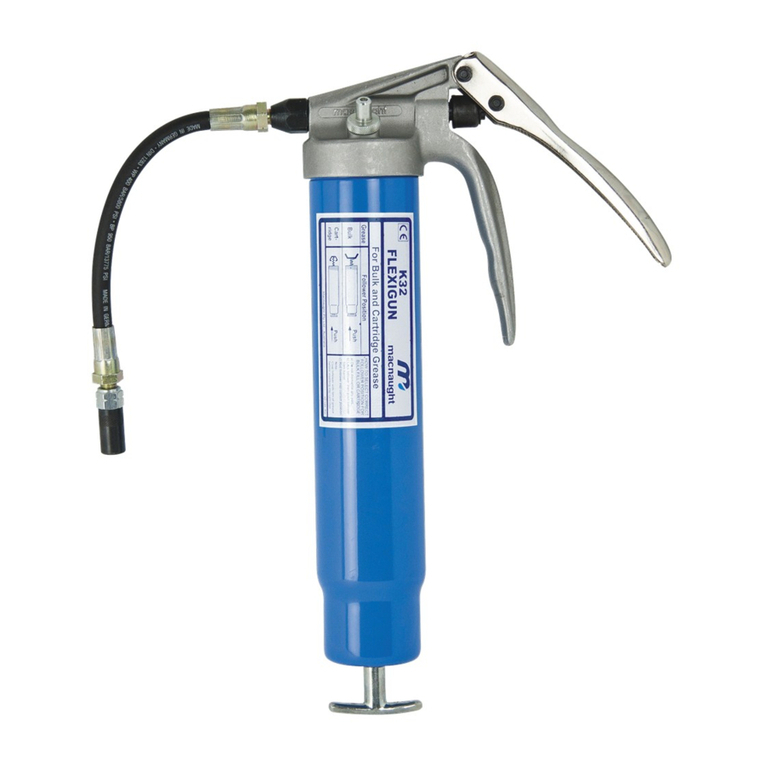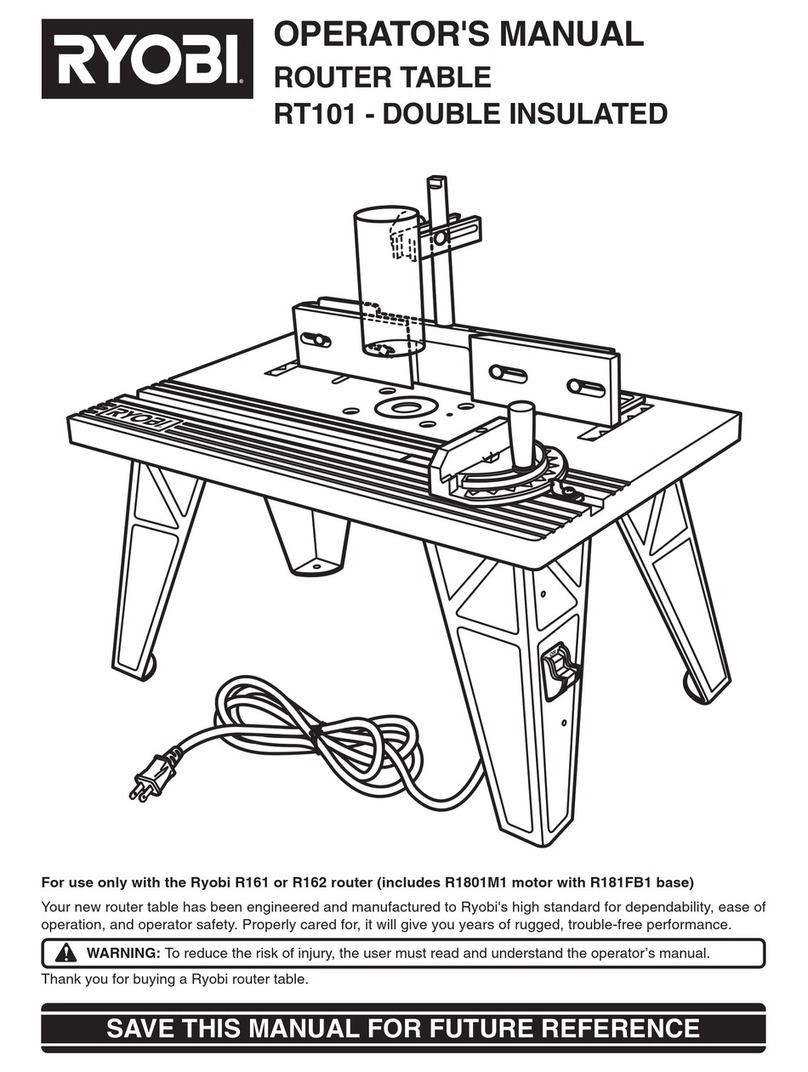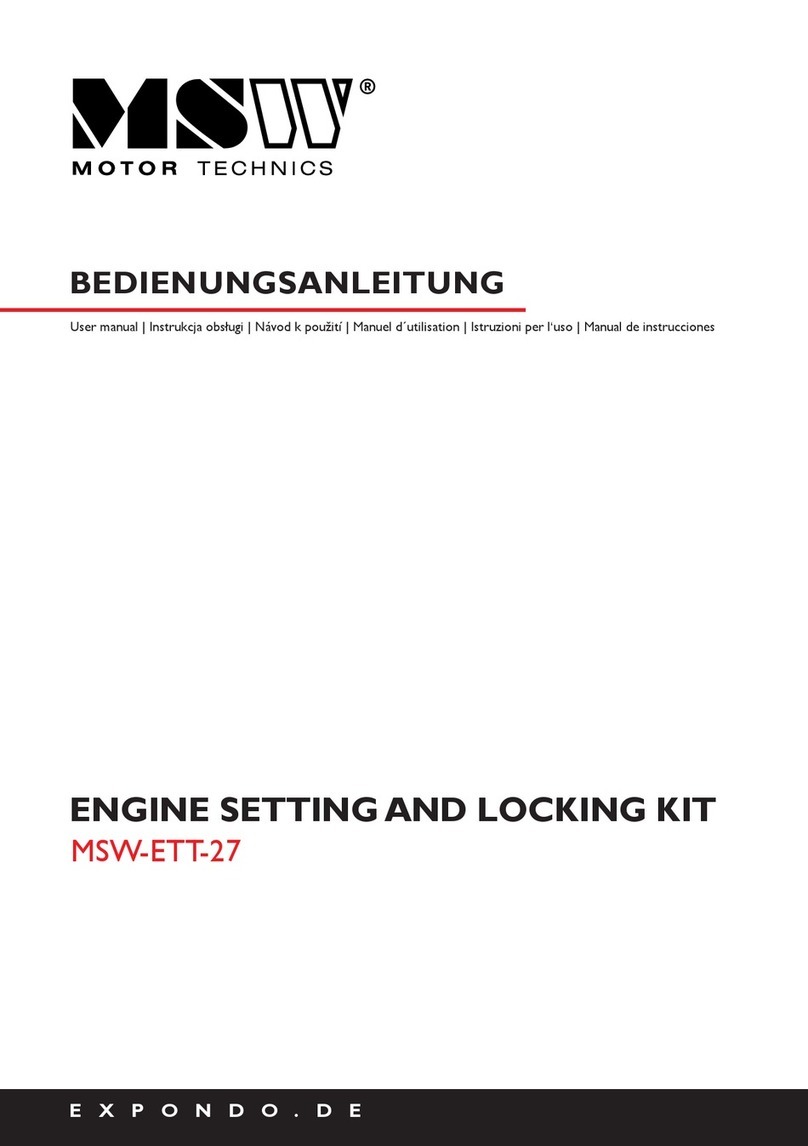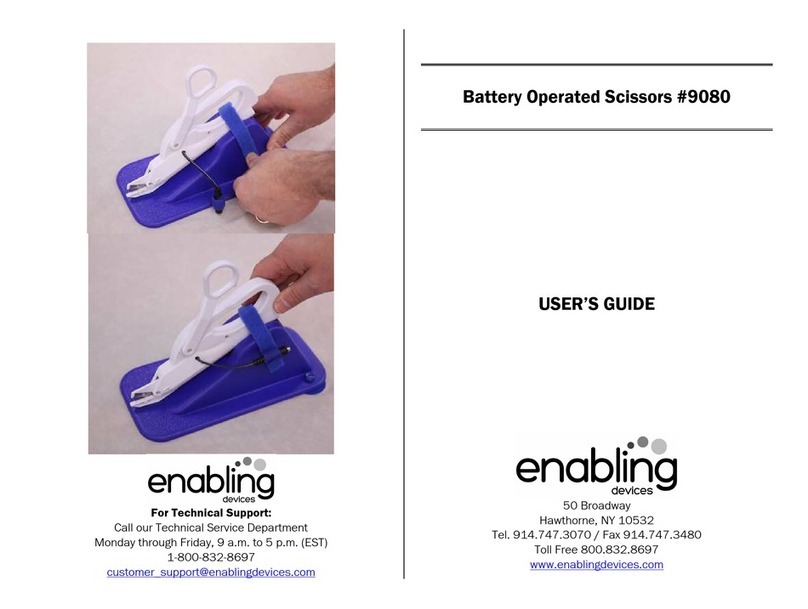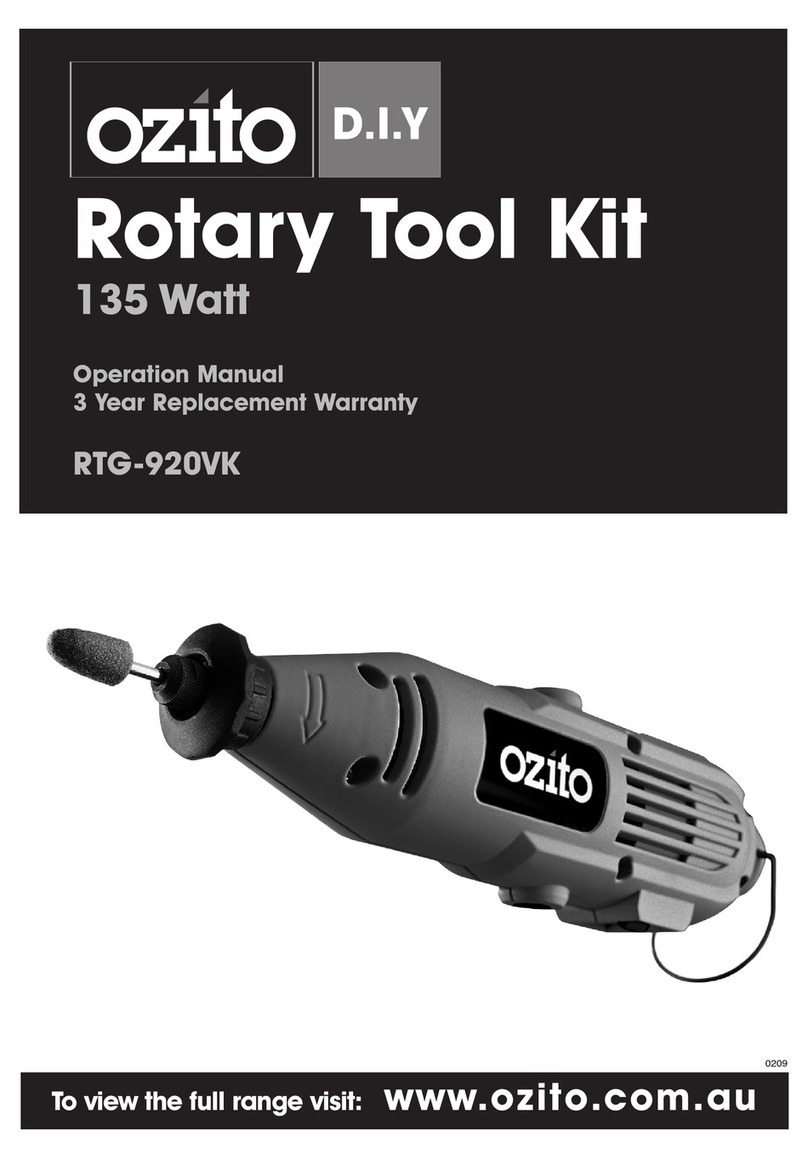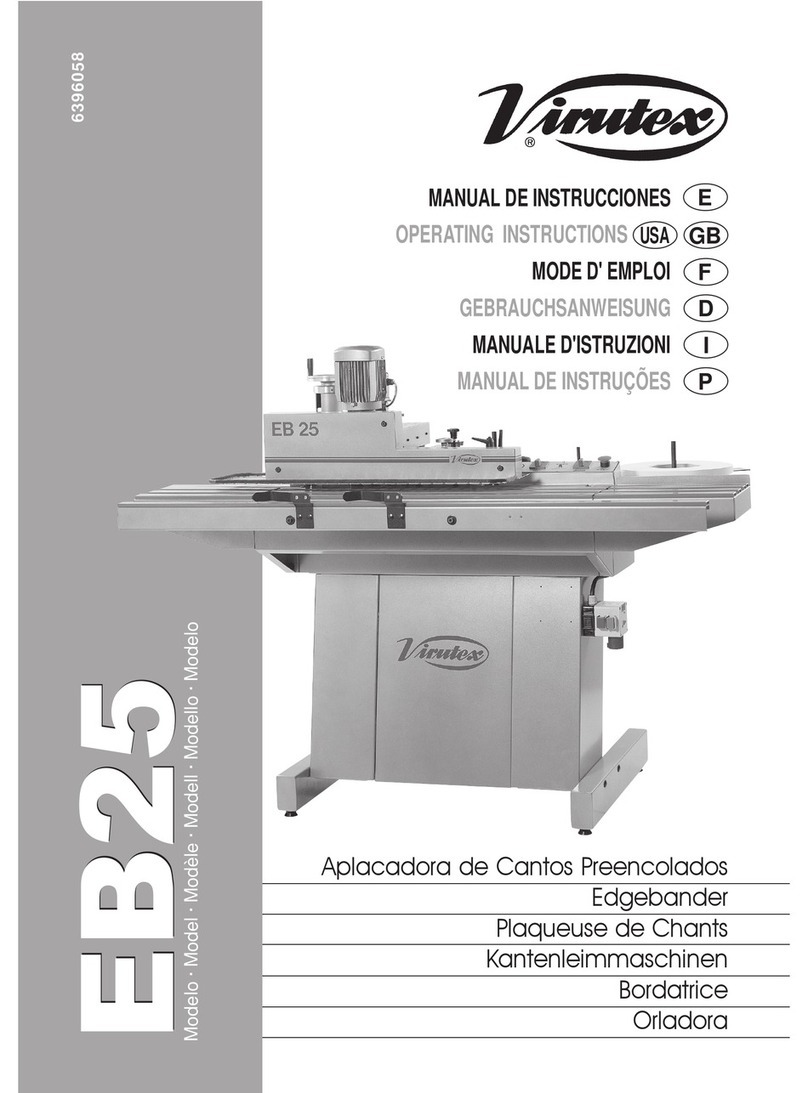PT M680 User manual

SPECIFICATIONS:
Max capacity (IN) .......................................3/16
Pounds of pull ........................................1,584
Air pressure (P.S.I.) ....................................... 90
Average air consumption (C.F.M.) ............................ 4
Air inlet (N.P.T.) ..........................................1/4
Hose size (I.D.) ....................................... 3/8 in.
Length (IN.) ..........................................10-5/8
Weight (LBS.) ..........................................3.33
Specifications are subject to change without notice.
WARNING!
READ, UNDERSTAND AND FOLLOW ALL INSTRUCTIONS AND
WARNINGS BEFORE OPERATING THIS TOOL. FAILURE TO DO SO
MAY RESULT IN PERSONAL INJURY AND/OR PROPERTY DAMAGE AND
WILL VOID WARRANTY.
Some dust created by power sanding contains chemicals known to the State of California to cause cancer, birth defects or other reproductive
harm. An example of this type of chemical is lead from lead based paints, Crystalline Silica from bricks and cement or other masonry, Arsenic
and Chromium from chemically treated lumber. Your risk from these exposures varies, depending on how often you do this type of work. To
reduce your exposure: work in a well ventilated area and work with approved safety equipment, such as dusk masks that are specially designed
to filter out microscopic particles.
3/16" AIR RIVETER
OWNER’S MANUAL
Stock Number M680
LIMITED WARRANTY
PERFORMANCE TOOL® extends only the following warranties, and only to original retail purchasers. These
warranties give specific legal rights. Except where prohibited by local law, the law of the State of Washington
governs all warranties and all exclusions and limitations of warranties and remedies. There may be other rights
which vary from state to state.
PERFORMANCE TOOL® warrants the product to be free from defects in materials and workmanship under normal
use and service. A defective product may be returned for a free replacement within 90 days from the date of
purchase, provided that product is returned to place of purchase immediately after discovery of defect. After 90
days and up to one year from date of purchase, PERFORMANCE TOOL® will replace at no charge any parts which
our examination shall disclose to be defective and under warranty. These warranties shall be valid only when a
sales receipt showing the date of purchase accompanies the defective product or defective part (s) being returned.
For part (s) after 90 days, please remit your request, postage prepaid to:
PERFORMANCE TOOL, P.O. Box 88259 Tukwila, WA 98138
These warranties exclude blades, bits, punches, dies, bulbs, fuses, hoses, and other consumables which must be
replaced under normal use and service. These warranties shall not apply to any product or part which is used for a
purpose for which it is not designed, or which has been repaired or altered in any way so as to affect adversely its
performance or reliability, nor shall these warranties apply to any product or part which has been subject to
misuse, neglect, accident or wear and tear incident to normal use and service.
PERFORMANCE TOOL® does not authorize any other person to make any warranty or to assume any liability in
connection with its products.
Except for warranties of title and the limited express warranties set forth above, PERFORMANCE TOOL® makes no
express or implied warranties of any kind with respect to its products. In particular, PERFORMANCE TOOL® makes
no implied warranty of merchantability and no implied warranty of fitness for any particular purpose, except that for
goods purchased primarily for personal, family or household use and not for commercial or business use,
PERFORMANCE TOOL® makes an implied warranty of merchantability (and, if otherwise applicable, an implied
warranty of fitness for a particular purpose), but only for the particular qualities or characteristics, and for the
duration, expressly warranted above.
The laws on limitation of implied warranties may differ from state to state, so the above limitations may not apply in
all cases.
PERFORMANCE TOOL® shall not be liable for consequential, incidental or special damages resulting from or in any
manner related to any product, or to the design, use, or any inability to use the product. The sole and exclusive
remedy for a defective product or part shall be the repair, or replacement thereof as provided above. The laws on
limitation of remedies or on consequential, incidental or special damages may vary from state to state, so the above
limitations may not apply in all cases.
© Copyright 2016 WILMAR CORPORATION, P.O. Box 88259 Tukwila, WA 98138

1. Be sure air is in "OFF" position when connecting tool to air supply.
2. Always wear approved eye protection when using air tools. If raising dust, wear a
suitable mask.
WARNING: Some dust created by power sanding, sawing, grinding, drilling, and other construction activities, contain chemicals known [to
the State of California] to cause cancer, birth defects or other reproductive harm. Some examples of these chemicals are:
1. Lead from lead-based paints;
2. Crystalline silica from bricks and cement or other masonry products;
3. Arsenic and chromium from chemically treated lumber.
Your risk from these exposures varies, depending on how often you do this type of work. To reduce your exposure to these chemicals:
work in a well ventilated area, and work with approved safety equipment, such as those dust masks that are specially designed to filter out
microscopic particles.
3. Use only those accessories that are designed for use with air tools. For example, with
impact wrenches do not use ordinary sockets. Use impact sockets for all- air tools.
4. Be sure to disconnect tool from air supply before changing accessories, performing
service on tool and when not in use.
5. As with any tool, use common sense when operating. Do not wear loose clothing or
jewelry that could become caught by moving parts, causing injury. Operate tool a safe
distance from yourself and others in the work area.
6. To ensure long life of the air tool be sure to oil the tool daily before using. See below
for instructions.
7. Follow air source manufacturers directions for connection of regulators, filters, and
other accessories to air source. Do not install quick couplers directly on tool as they
put unnecessary strain on the air inlet threads possibly causing them to wear out
prematurely. Instead, install them on a short length of air hose attached to the tool.
8. Do not overreach. Keep proper footing and balance at all times. Do not reach over or
across running tools or air hoses.
9. Disconnect air hose and release any built-up air pressure. Do not service the tool or
disassemble it with the air hose attached. Verify that there is no residual air pressure
even after disconnecting hose. Disconnect the Riveter when not in use.
10. Stay alert. Watch what you are doing. Use common sense. Do not operate any tool
when you are tired.
11. Check for damaged parts. Before using any tool, any part that appears damaged
should be carefully checked to determine that it will operate properly and perform its
intended function. Check for alignment and binding of moving parts, any broken
parts, and any other condition that may affect proper operation. Any part that is
damaged should be properly repaired or replaced by a qualified technician. Do not
use the tool if the Trigger does not operate properly.
12. Do not operate tool if under the influence of alcohol or drugs.
13. Do not use combustible gas as a power source.
14. Avoid working alone. If an accident happens, an assistant can bring help.
WARNING! The warnings, cautions, and instructions discussed in this instruction manual
cannot cover all possible conditions and situations that may occur. It must be understood
by the operator that common sense and caution are factors which cannot be built into this
product, but must be supplied by the operator.
IMPORTANT SAFETY INFORMATION
INSUFFICIENT POWER:
Probable Cause Solution
Dirty or clogged air passages......... Flush and lubricate tool, drain air tank and supply line.
Insufficient air supply...................... Increase line pressure, Make sure compressor
matches tool's air pressure and consumption needs.
Air leakage...................................... Use PTFE tape at all fittings and joints. Check tool for
worn or damaged O-rings & seals.
Worn/damaged wear & tear parts .. Replace as necessary.
Tool matching ................................. Be sure you are using a tool suited for the torque
requirements of the job at hand.
JAWS SLIPPING:
Probable Cause Solution
Worn or damaged jaws .................. Replace jaws.
JAWS WILL NOT OPEN:
Probable Cause Solution
Loose nosepiece ............................ Tighten nosepiece.
Dirty jaws........................................ Clean jaws.
STROKE IS TOO SHORT:
Probable Cause Solution
Rivet pin inserted incorrectly.......... Fully insert pin.
Low oil ............................................ Prime riveter
Rivet wrong size ............................. Use proper rivet length
TROUBLESHOOTING
1 6

Clean air of correct air pressure is recommended for the power supply for this tool. A
maximum of 90 PSI at the tool is recommended for most air tools of this class. Check
specifications section for recommended pressure. (Depending on length of air hose and
other circumstances, air pressure at compressor may need to be increased to 100 PSI to
ensure 90 PSI at the tool.)
Water in the air hose and compressor tank contributes to reduced performance and
damage of the air tool. Drain the air tank and filters before each use and as necessary to
keep the air supply dry.
Hose length over 25’ causes loss in line pressure. Increase hose I.D. or increase
compressor pressure to compensate for the pressure loss. Use an in-line pressure
regulator with gauge if air inlet pressure is critical.
AIR SOURCE
SPECIFIC SAFETY INFORMATION
1. Check that adjusting wrenches are removed from the tool and work surface before
attaching to an air source.
2. Avoid unintentional starting. Be sure the Trigger is in the OFF position when not in use.
Do not carry any tool with your finger on the Trigger, whether it is attached to an air
source or not. Do not point the tool towards yourself or anyone.
3. Fire the Rivets into an appropriate work surface only. This Riveter is designed for use
on metal objects only and is not suitable for soft surfaces.
4. Do not fire the Rivets too close to the edge of a workpiece. They may split the
workpiece and cause it to fly free, causing personal injury.
5. Transport the Riveter safely. Disconnect the air supply when moving the tool in the
workplace. Carry the tool by the handle and avoid contact with the Trigger.
6. Attach the Safety Cap to the Riveter before use. Turn the slot in the Safety Cap
upward to avoid spilling used Rivet Pins.
Oil tool before each use. 4 to 5 drops of a good grade Air Tool Oil placed in the air inlet
is sufficient. Use proper air pressure and CFM rating listed for this tool.
Drain water from hoses and compressor tank. Water in the air supply line will cause
gumming and loss of power. Clean the air filter on the supply line and flush the tool with
gum solvent or a 50/50 mix of air tool oil and kerosene. It may be necessary to
disassemble the tool to properly clean and re-lubricate.
LUBRICATION
Motor
Oil
Trans.
Fluid
Brake
Fluid
Water
Whip
hose
Air Tool
Oil
YesNo
PARTS LIST
1 Air Cylinder 1
2 Cylinder Cap 1
3 O-Ring 1
4 Air Piston Stem 1
5 Plate (Large) 2
6 Piston 1
7 Air Piston Ring 1
8 Plate (Small) 1
9 Nut 1
10 Valve 1
11 Spring 1
12 Valve Cap 1
13 O-Ring 1
14 Valve Pusher 2
15 Valve Pusher O-Ring 1
16 Valve Spring 1
17 Valve Collar 1
18 Collar O-Ring 1
19 Frame Lock Nut 2
20 Rubber Cushion 1
21 Back-Up O-Ring 5
22 Back-Up Ring 1
23 Frame 1
24 Set Pin 1
25 Lever Pin 1
26 Trigger 1
27 Trigger Rod 1
28 Trigger Pin 1
29 Trigger Lever 1
30 Connecting Pin 1
31 Connecting Pin 4
32 Oil Piston 4
33 Oil Piston O-Ring 2
34 Back-Up Ring 1
35 Return Spring 1
36 Frame Cap 1
37 Frame Cap O-Ring 1
38 Hanging Clip 1
39 Safety Cap 1
40 Frame Cap Nut 2
41 Back-Up O-Ring 3
42 Back-Up Ring 4
43 Case Lock Nut 5
44 Case Washer Ring 6
45 Jaw Pusher Spring 1
46 Jaw Case End Tart 1
47 Jaw Pusher 1
48 Jaw 1
49 Jaw Case Front Tart 1
50 Frame Head 1
51 Nosepiece
(3/32, 1/8, 5/32 & 3/16)
4
52 Spanner Gauge 1
53 Spanner 1
# Description Qty. # Description Qty. # Description Qty.
5 2

CHANGING NOSEPIECES
When changing Nosepieces, use the spanner to unscrew the Nosepiece, and tightly
screw in the desired Nosepiece.
1. Secure the Safety Cap firmly to the Riveter by tightening the Frame Cap Nut. While
securing turn the slot in the Safety Cap upward to avoid spilling used rivet pins.
2. Depending on the size of rivet’s pin used, attach the corresponding Nosepiece size
(3/16”, 5/32”, 1/8”, or 3/32”) with the Spanner.
NOTE: When drilling rivet holes in a workpiece, use the same diameter drill bit as the
outer diameter of rivet you will be using.
3. Attach an air hose to the Quick Connector of the Riveter, and turn on the air
compressor with its regulator set at 90 PSI. Do not exceed 90 PSI.
4. Insert the small end of a rivet fully through the Nosepiece.
CAUTION! Keep clear of the trigger when inserting rivets.
5. Insert the rivet through the predrilled hole in the workpiece.
6. Hold the Riveter firmly with both hands, and squeeze the Trigger to activate the Riveter.
Repeat as necessary. Then, release pressure on the Trigger
7. When finished using the Riveter, turn off the air compressor. Squeeze the Trigger again
to release any compressed air in the Riveter. Disconnect the air hose from the tool.
Then, store the Riveter in a clean, dry, safe location out of reach of children
OPERATION
Nosepiece
Air Inlet
Trigger
Safety Cap
WARNING! Wear ANSI-approved safety impact goggles when performing any inspection,
maintenance, or cleaning procedures.
WARNING! Prior to performing any inspection, maintenance, or cleaning of the Riveter,
make sure to disconnect the air hose from the tool. Then, squeeze the Trigger (40)
again to release any compressed air in the Riveter.
1. To clean the exterior of the Riveter use a clean, damp
cloth using a mild detergent or
mild solvent. Do not immerse the tool in liquids.
2. To clean and change the Jaws:
a. Unscrew and remove the Frame Head using the
Spanner.
b. Use the Spanner to unscrew and remove the Jaw
Cases. Use care as there is a Spring behind the Jaw Case which may fly out.
c. Remove the Jaws from between the Jaw Cases.
d. If you are going to clean the Jaws, use a steel brush and mild solvent. Then apply a
light coat of machine oil to the Jaws. If you are going to replace the Jaws, the
entire assembly must be replaced at the same time due to the possibility of
additional parts being damaged when the Jaws were damaged.
e. Insert the Jaws back into the Jaw Cases.
f. When reassembling the Jaw Cases, make sure the wedge on the Jaw Pusher’s
head lines up in between the Jaws, pushing them slightly apart.
g. Check the distance from the head of the Jaw Cases to the mounting threads of the
Frame Head using the gauge on the Spanner. With the gauge at a slight incline, the
back of the gauge should rest on the beginning of the Frame Head threads, while
the front of the gauge should rest on the front edge of the Jaw Case. If it does not,
tighten/loosen the Jaw Cases until the distance is corrected. (See below.)
h. Before reassembly, secure the Lock Nut against the Jaw Case assembly using the
Spanner Gauge.
INSPECTION, MAINTENANCE & CLEANING
ADDING OIL TO HYDRAULIC RIVETER
1. Disconnect air hose.
2. Use the spanner to take apart the head.
3. Use the spanner to open the bottom cover.
4. Remove the piston of the cylinder.
5. Clean the inside of the cylinder and the frame body.
6. Lubricate all moving parts.
7. Clean the stem of piston, apply grease to the inner wall of cylinder and the inner wall of
cylinder and the O-ring.
8. Reassemble the riveter by following the disassembly procedure in reverse.
3 4
Other PT Tools manuals



